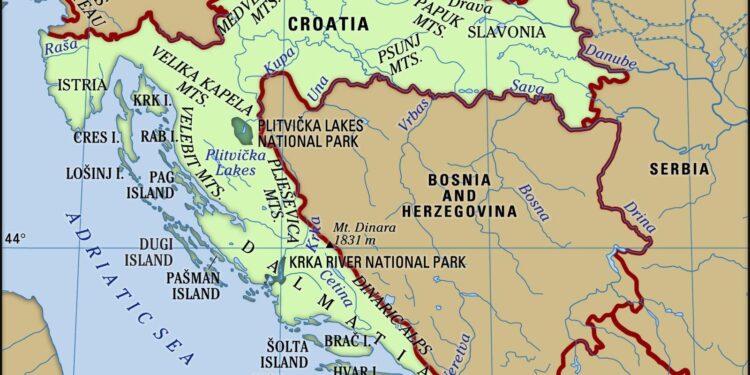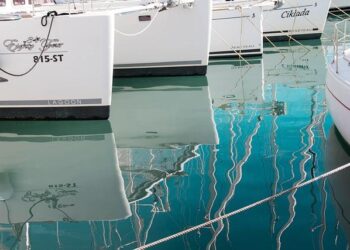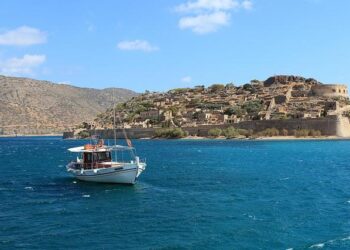Croatia is embarking on a groundbreaking initiative to integrate nature conservation with its energy transition, setting a new standard for sustainable development. In collaboration with The Nature Conservancy, the country is using advanced ecological mapping to identify and protect critical natural areas while expanding renewable energy infrastructure. This innovative approach aims to balance environmental preservation with the urgent need to reduce carbon emissions, positioning Croatia as a leader in harnessing nature-based solutions to power a cleaner, greener future.
Croatia’s Natural Landscapes Key to Sustainable Energy Future
Croatia’s diverse ecosystems serve as more than just breathtaking scenery-they are pivotal assets in the country’s push towards a sustainable energy future. By leveraging woodland expanses, wetland reserves, and coastal zones, Croatia is pioneering an innovative approach that intertwines ecological preservation with renewable energy development. This strategy not only protects biodiversity but also enhances the resilience of energy infrastructure by minimizing environmental disruption. Among the priorities is the careful mapping of areas with high ecological value to ensure that wind farms and solar projects coexist seamlessly with natural habitats, creating a blueprint for sustainable growth that respects the land’s intrinsic balance.
The Nature Conservancy’s latest analysis highlights several key factors influencing this integration, from biodiversity hotspots to carbon sequestration potential. The approach focuses on:
- Identifying low-impact zones for renewable installations to reduce habitat fragmentation.
- Promoting energy solutions that complement natural processes, such as agrovoltaics and micro-hydropower.
- Engaging local communities in stewardship roles to align conservation goals with economic benefits.
A recent comparative overview shows how different landscapes contribute uniquely to energy sustainability:
| Landscape Type | Renewable Potential | Ecological Importance |
|---|---|---|
| Coastal Zones | High (wind, tidal) | Critical nesting sites for seabirds |
| Forests | Moderate (biomass) | Carbon sinks and biodiversity hubs |
| Wetlands | Low (micro-hydropower) | Water purification and flood control |
Innovative Mapping Techniques Reveal Untapped Green Resources
Cutting-edge geospatial technology and satellite imagery are transforming how Croatia identifies and manages its natural assets. By integrating data from various ecological, hydrological, and geological sources, researchers are crafting high-resolution maps that pinpoint previously overlooked green resources. These innovative techniques offer a granular view of Croatia’s biodiversity, enabling conservation efforts to target critical habitats and carbon sinks with unprecedented precision.
Key features of this approach include:
- Real-time environmental monitoring to assess ecosystem health dynamically
- Predictive modeling that forecasts the impact of climate change on natural reserves
- Community-driven data collection enhancing local engagement and accuracy
| Resource Type | Estimated Potential | Target Regions |
|---|---|---|
| Forests for Carbon Sequestration | 1.2 million tons/year | Lika, Gorski Kotar |
| Wetlands for Biodiversity | High | Neretva Delta, KopaÄŤki Rit |
| Renewable Energy Zones | 500 MW potential | Dalmatian Coast, Slavonia |
Expert Recommendations for Integrating Conservation and Energy Development
Stakeholder collaboration stands at the forefront of aligning energy ambitions with environmental stewardship in Croatia. Experts emphasize the critical role of integrating detailed biodiversity mapping with regional energy planning to anticipate and mitigate conflicts before they arise. This approach involves continuous dialogue between conservationists, energy developers, government authorities, and local communities, ensuring that ecological integrity and sustainable development progress hand-in-hand.
Innovative tools like spatial planning software and real-time environmental monitoring enable the identification of priority conservation areas, while simultaneously guiding the siting of renewable energy projects. Key recommendations include:
- Prioritizing habitats that support endemic and endangered species
- Incorporating ecosystem services valuation in economic decision-making
- Implementing adaptive management practices that respond to environmental feedback
- Enhancing cross-border cooperation for landscape-scale conservation efforts
| Recommendation | Impact on Conservation | Benefits for Energy Development |
|---|---|---|
| Spatial Biodiversity Mapping | Identifies critical habitats | Reduces project delays |
| Stakeholder Forums | Builds trust and transparency | Facilitates permit approval |
| Adaptive Management | Maintains ecosystem resilience | Optimizes operational efficiency |
| Cross-Border Collaboration | Protects migratory species | Enables regional energy integration |
In Retrospect
As Croatia accelerates its shift toward sustainable energy, initiatives like The Nature Conservancy’s innovative mapping project are proving essential. By identifying and protecting critical natural areas, the country is not only safeguarding biodiversity but also laying the groundwork for a cleaner, greener future. This approach underscores the importance of integrating environmental stewardship with energy development-a model that could inspire other nations navigating the complex path to a low-carbon economy.
















